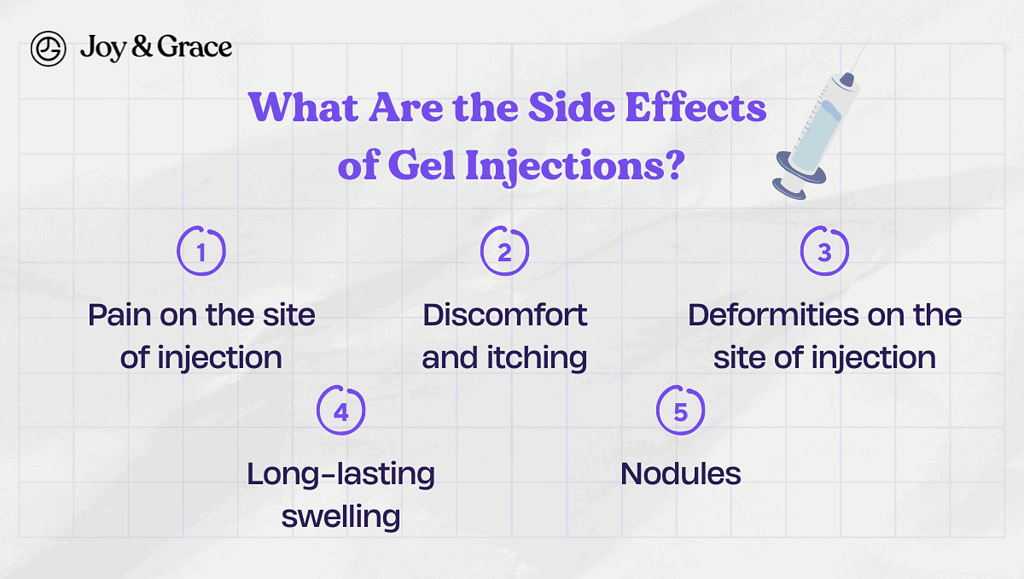Shoulder pain can be a frustrating experience. It can worsen life quality by causing a lot of discomfort and worry. Sometimes shoulder pain treatments like rest, physical therapy, or even oral medications do not work. In this case, doctors may recommend shoulder injections for pain.
So, what exactly are shoulder injections? Do they really relieve pain? Are they safe? Read along as we tell you all you need to know about soothing shoulder pain with injections.
Understanding Shoulder Injections for Pain Relief
Shoulder injections are medications that are injected into the joint space. They are widely used for shoulder fast pain relief. Injections apply, especially when other treatment methods have failed.
Shoulder pain is a common problem worldwide. It may result from a wide range of diseases and injuries. 7 out of 10 people will complain of shoulder pain at least once in their lives.
There are a few types of injections for shoulder pain you should know. Let us see what these injections are and how they can help get rid of your pain.
Types of Injection for Shoulder Pain

As promised, here are the most used types of shoulder injection to relieve pain:
- Corticosteroid Injections: As the name suggests, these injections contain corticosteroids or cortisone.
- Hyaluronic Acid (HA) Injections: These injections are also known as Viscosupplementation or Gel injections. They contain a substance similar to hyaluronic acid. Hyaluronic acid is naturally found in the connective tissue of your joints.
- Platelet Rich Plasma (PRP) Injections: These injections contain platelets. What are platelets, you may ask? Platelets are flat, plate-shaped blood cells that waddle around within the blood. They help repair damaged blood vessels. PRP injections represent a new treatment option for shoulder pain.
- Stem Cell Injections: These injections contain stem cells. Stem cells are pretty special cells because they are precursor cells. As precursors, they are able to differentiate into various cell types.
Cortisone and HA injections are the more commonly used injections for shoulder pain. This is why this article is concerned primarily with these two types. Let’s talk briefly about the last two types from the list.
PRP injections and stem cell injections are newer shoulder injection therapy methods.
PRP injections use the body’s own blood sample, so it’s safe to say they are safe for use! They are suggested to relieve shoulder pain for several weeks by promoting tissue healing. PRP injections can be used alone or with other procedures.
Stem cell injections contain so-called mesenchymal stem cells (MSCs). These cells can develop into many different cells with anti-inflammatory and healing abilities. These injections have shown promising results in animal studies. This means they are on their way to becoming available for humans too!
Okay, now let us inject ourselves with some more details.
How Do Injections in the Shoulder Work?
So far, we have understood that each shoulder injection type has its very own mechanism of action. Even so, all the types we listed have something in common. They target specific structures within the shoulder joint, such as the joint capsule, tendons, and bursa.
Let us see how shoulder injections work:
- Cortisone injections contain cortisone. Cortisone decreases inflammation, providing a reduction in pain and restoring shoulder joint mobility.
- Hyaluronic acid injections contain hyaluronic acid. This characteristic substance provides lubrication and cushioning for the shoulder joint. Thus, it is vital for proper joint movement!
- Platelet-rich plasma injections decrease inflammation, promote healing, and regenerate damaged tissue.
- Stem cell injections have stem cells, which can transform into tissue-healing cells.
What is the Most Common Injection for Pain?
The most commonly used shoulder injections for pain are cortisone injections. They have proven effective in relieving shoulder pain and improving shoulder function.
Which Shoulder Injection Relieves Pain?
As we mentioned earlier, cortisone injections are the type of shoulder injection mostly used to relieve pain. And this type of shoulder injection does indeed work against pain. Thus, you may expect positive results after receiving an injection.
But it is important to know that shoulder injections are not a cure-all for shoulder pain. Instead, they represent a temporary, fast pain-relief method.
In most cases, shoulder injections come into play only after conservative treatments have failed. Your doctor may suggest you combine injections with these treatment methods.
Conservative treatment methods include:
- Painkillers and other medicines
- Physical therapy
- Rest and avoidance of activities
Can Cortisone Injections Help With Shoulder Pain?
Cortisone is a type of steroid with strong anti-inflammatory properties. When it is injected into the shoulder joint, it helps reduce inflammation, swelling, and joint pain.
Cortisone injections may have short-term or long-term effects on shoulder pain. The effectiveness of corticosteroid injections is often dependent on the underlying disease.
Evidence suggests they have good short-term and long-term effects against adhesive capsulitis pain. Adhesive capsulitis is also known as “frozen shoulder.” The hallmark of this condition is a stiff, painful shoulder.
On the other hand, similar cortisone injection effects in diseases like shoulder impingement syndrome are absent.
How can you find out when you need a cortisone injection, then? The answer is simple, but we tend to forget it. Consult your doctor!
What is the Best Way to Inject Into the Shoulder?
Receiving a shoulder injection for pain might sound a little scary. Some of our staff members would rather deal with the pain than get one. Allow us to tell you that an injection is as painful as a light pinch on your shoulder! So, what is the procedure?
Intra-articular steroid injections are administered by a healthcare professional, such as a doctor or nurse. First, your healthcare professional mixes the cortisone shot with a local anesthetic, such as lidocaine. Then, they apply the injection to the shoulder joint area. This examination is usually undertaken as an outpatient procedure, and you will be allowed home after a short period of time.
The anesthetic is there to prevent any potential pain while injecting. It is why your shoulder area may become numb for a few hours. After the anesthetic effect wears off, you may feel joint pain lasting up to 3 days.
What Is The Most Common Site For Shoulder Injection?

Doctors use different techniques to apply shoulder injections. The technique depends on the underlying cause of the shoulder pain. Each shoulder injection technique is meant for a particular shoulder site. Let us go right into the main techniques.
Glenohumeral Joint Injections
The glenohumeral joint is sometimes called the shoulder joint. Glenohumeral joint injections work well to relieve shoulder pain from mainly three diseases:
- Osteoarthritis
- Frozen shoulder syndrome, and
- Inflammatory arthritis disease like rheumatoid arthritis.
There are three approaches for glenohumeral injections:
- Posterior (most common),
- Anterior, and
- Superior.
Thus, the injection enters from the back, front, or top of the shoulder.
Acromioclavicular Joint Injections

The acromioclavicular (AC) joint is the joint that connects the acromion with the clavicle. AC joint injections are used for osteolysis of the distal clavicle and osteoarthritis.
Osteolysis of the distal clavicle refers to the condition where the bone at the end of the clavicle breaks down and deteriorates. Osteoarthritis, conversely, is a degenerative joint disease characterized by the breakdown of cartilage and the subsequent inflammation and pain in the affected joint.
Both of these diseases usually develop after joint overuse or injury.
Subacromial Space Injections

The subacromial space is an important shoulder joint space under the acromion. It contains structures that are crucial for proper joint function. Subacromial injections do well against persistent pain from diseases like:
- Subdeltoid bursitis,
- Rotator cuff tendinosis, impingement, and tears
- Adhesive capsulitis (Frozen shoulder)
Scapulothoracic Articulation Injections

These injections fight pain and inflammation in an area close to the lower part of the shoulder blade and thoracic cage. This pain results from throwing, weight-lifting, pushing, or pulling.
Injections in the Area of the Biceps Tendon
As the name suggests, these injections go into the tendon of the biceps muscle. The biceps tendon goes through the shoulder joint and into the humerus bone. Injections in the biceps tendon area relieve pain from rotator cuff tendinitis. Weight lifters and rock climbers are at a higher risk for this condition.
What is a Guided Injection in the Shoulder?
A shoulder joint injection can be performed with or without visual guidance.
A guided injection is done with the help of imaging. The image shows where the injection is in real-time.
Guided injections may go with Ultrasound imaging or Fluoroscopy.
Ultrasound is a type of imaging that uses sound waves to visualize structures inside the body. Fluoroscopy uses an X-ray tube called a fluoroscope. The fluoroscope provides continuous images of the inside of your shoulder.
During a guided injection, you will lie on a table and expose your shoulder area. The doctor will clean up your shoulder and ensure sterile conditions. After applying a local anesthetic, your doctor directs a very small needle into your joint, using Ultrasound or X-ray guidance.
The pros of guided injections may include the following:
- They cause less patient discomfort.
- They maintain patient safety.
- They heavily increase the accuracy and effectiveness of injections.
How Many Injections Do I Need for Shoulder Pain?
Could you possibly keep on receiving injection after injection for your shoulder pain?
Well, according to a comprehensive clinical study, injections were beneficial until 16 weeks from the date of the first injection. This study stated the following:
- Only up to three injections benefit the patients.
- Evidence that four to six injections are beneficial is lacking.
- There is no evidence to support giving more than six injections.
NHS suggests having up to four injections per year. It says there should be at least three months between injections.
Are Shoulder Injections Safe?
In short, the answer is yes, shoulder injections are safe and well tolerated. A qualified healthcare professional should always be the one to give them to guarantee their safety.
According to a patient study, shoulder injections are associated with no serious harm. But, apart from the obvious fear factor, shoulder injections may sometimes cause unnerving adverse effects. Let us see what these adverse effects are.
What Are the Side Effects of Steroid Injections?

Most of the side effects of steroid shoulder injections are mild and disappear within a few days. If you have had a steroid injection, chances are you are experiencing the following:
- Pain on the site of injection
- Face flushes
- Headaches
- Infection
- An upset gut
- Skin atrophy and hypopigmentation
- Temporary increase in sugar levels and blood pressure
These effects happen because of two main reasons:
- Cortisone makes changes inside the body. Cortisone, like other steroids, weakens the immune system.
It also affects the skin, metabolism, heart, blood vessels, and digestive tract.
Additionally, cortisone may increase your blood sugar levels for a while after entering your system. For this reason, you should be careful and consult your doctor if you are pregnant or have diabetes.
- The injection technique. To decrease the chances of infections or pain, your doctor will give you an injection in sterile conditions. If conditions are not sanitary, the injected area might become infected.
Note: Your doctor should always know about any steroid allergy you might have. If they are not recognized, allergies may cause dangerous complications.
Are Gel Injections Safe?
Gel injections are also known as hyaluronic acid injections. As we described, they contain a thick, gel-like substance called hyaluronic acid. Hyaluronic acid is naturally found in the body. It helps lubricate and cushion joints.
Let us get back to the answer we are looking for. Yes, gel injections are generally considered safe.
But, as with other medicines, there are risks and potential side effects to consider. A 2019 study states that around 40% of patients with shoulder pain who received a hyaluronic acid injection for osteoarthritis pain experienced mild to moderate side effects.
What Are the Side Effects of Gel Injections?

The main side effects of gel injections include the following:
- Pain on the site of injection (60% of cases),
- Discomfort and itching (about 13% of cases),
- Deformities on the site of injection (20% of cases),
- Long-lasting swelling (about 7% of cases), and
- Nodules (80% of cases).
Frequently Asked Questions About Steroid Injections in the Shoulder
Are Shoulder Injections the First-line Treatment for Shoulder Pain?
According to guidelines, shoulder injections are not the first-line treatment for shoulder pain. They usually apply after more conservative treatment has failed.
Which Steroid is Best for Shoulder Injection?
Cortisone is the most popular and used steroid for shoulder injections. Because of its strong anti-inflammatory properties, it is the steroid of choice for most injections.
What is the Average Cost of Shoulder Injections?
The answer to this question depends on your insurance plan and shoulder complaint. Let us find out what the ballpark for the average cost is.
What is the average cost of a cortisone shot?
Cortisone injections may cost anywhere from $25-$300. On average, a cortisone injection costs $84 in an outpatient facility and $146 in the hospital.
Other types of shoulder injections usually cost more, as they are not as available.
Are Shoulder Injections Successful?
Clinical trials show that shoulder injections are great short-term solutions to relieve shoulder pain. According to a 2017 case study, over 95% of patients said a cortisone injection helped reduce their shoulder pain. Shoulder joint function improved six weeks after the injection.
Other studies state that shoulder injections may even be better than painkillers for shoulder pain.
What is the Success Rate of Gel Injections?
Gel injections have also shown they are effective against shoulder pain. A study says that 78% of patients who took a hyaluronic acid injection reported shoulder pain relief. The same study also says that one gel injection may be successful and well tolerated in osteoarthritis patients for over six months.
Which Shoulder Injection is Best for Nerves?
Depending on its cause, shoulder pain may accompany nerve impingement or damage. In such cases, your doctor may recommend a nerve block injection as part of your pain management plan.
There are two nerve block injections for shoulder pain:
These injections contain an anesthetic and a corticosteroid. They usually come in handy for nerve conditions, such as adhesive capsulitis (frozen shoulder).
The suprascapular nerve block is an injection around the suprascapular nerve. This nerve handles muscle control and sensation in the shoulder joint. The injection can reduce pain and inflammation in the shoulder joint and surrounding muscles. It is less invasive than the interscalene nerve block and has a lower risk of complications.
The interscalene nerve block is an injection of anesthetic around the brachial plexus. This injection can be effective in reducing pain throughout the entire arm. However, it is a more invasive procedure with a higher risk of complications.
Takeaway
Shoulder injections are a viable option for treating shoulder pain. They apply, especially when other treatment methods have failed.
Various types of injections are available for shoulder pain relief, including:
- Corticosteroid injections,
- Hyaluronic acid injections,
- Platelet-rich plasma (PRP) injections, and
- Stem cell injections.
Each of these therapeutic injection types has its mechanism of action. The effectiveness depends on the individual and the underlying cause of the pain.
Cortisone injections are the most commonly used shoulder injections for pain. Cortisone is a strong anti-inflammatory medication. These injections are effective in relieving both acute and chronic shoulder pain and improving shoulder function.
Shoulder injections come into play after conservative treatments have failed. They provide temporary, fast pain relief. They are often combined with other conservative treatment methods.
The safety and number of shoulder injections you may depend on:
- The type of injection,
- Your overall health, and
- The severity of your shoulder pain.
While shoulder injections are generally safe, they can cause side effects. Always consult your healthcare provider to determine the best treatment plan for you.















